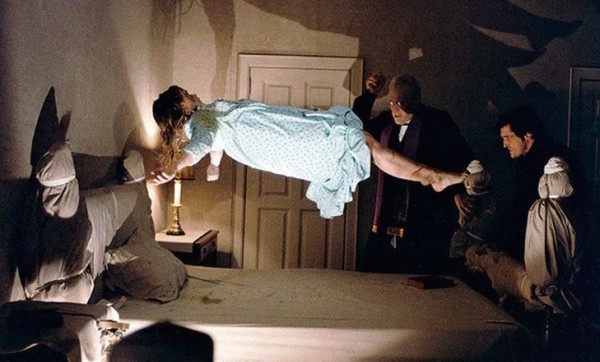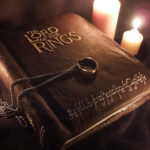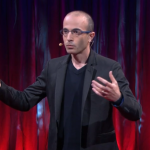Demons, Playing Cards, and Telescopes
by Joe Heschmeyer
Filed under Atheism, Belief
In 1949, Jerome S. Bruner and Leo Postman asked a group of 28 students at Harvard and Radcliffe to perform a simple task: identify playing cards. There were just two catches. First, these cards were shown very quickly: for 10 milliseconds at first, but increasing up to 1000 milliseconds if they struggled to identify the card. Second, the researchers were using a deck of four ordinary playing cards and six “trick cards” in which the card's color and suit were incongruous (red spades, black hearts, and the like).
This second catch proved to be quite vexing. Bruner and Postman found that it took these students four times longer to identify a “trick card” than a normal card:
"While normal cards on the average were recognized correctly -- here defined as a correct response followed by a second correct response -- at 28 milliseconds, the incongruous cards required 114 milliseconds. [...] The reader will note that even at the longest exposure used, 1000 ms., only 89.7 per cent of the incongruous cards had been correctly recognized, while 100 per cent of the normal cards had been recognized by 350 milliseconds."
The students' brains struggled to process something as out-of-the-ordinary as a red six of clubs. The first time that they saw a trick card, it took students an average of 360-420 milliseconds (more than twelve times longer than it took them to identify ordinary cards). Even after they had seen two or three trick cards, it still took a full 84 milliseconds for them to identify trick cards.
In many cases, the students reported a “compromise” color between the one that they expected and the one they actually saw: “(a) the red six of spades is reported as either the purple six of hearts or the purple six of spades; (b) the black four of hearts is reported as a "grayish" four of spades; (c) the red six of clubs is seen as "the six of clubs illuminated by red light."”
The researchers concluded that:
"[P]erceptual organization is powerfully determined by expectations built upon past commerce with the environment. When such expectations are violated by the environment, the perceiver's behavior can be described as resistance to the recognition of the unexpected or incongruous. The resistance manifests itself in subtle and complex but nevertheless distinguishable perceptual responses."
This is what we might call an incongruous perception problem: when we encounter something that disagrees with our worldview, we have a strong tendency to ignore or disregard it, or try to finesse it into our worldview by compromising it in some way.
Nor are the very intelligent somehow exempt from this. Bruner and Postman's test subjects were Ivy League students. And this incongruous perception problem has proven a real hindrance to scientists. For example, the first planet to be discovered since the time of Ptolemy (90-168 A.D.) was Uranus, in April of 1781. Yet in the century prior to William Herschel's discovery, there had been at least seventeen different occasions in which “a number of astronomers, including several of Europe's most eminent observers, had seen a star in positions that we now suppose must have been occupied at the time by Uranus.”
Thomas Kuhn, in his groundbreaking 1962 book The Structure of Scientific Revolutions, suggests that a similar perception problem was at play, with scientists blinded by their Ptolemaic cosmology to the data in front of them:
"Can it conceivably be an accident, for example, that Western astronomers first saw change in the previously immutable heavens during the half-century after Copernicus' new paradigm was first proposed? The Chinese, whose cosmological beliefs did not preclude celestial change, had recorded the appearance of many new stars in the heavens at a much earlier date. Also, even without the aid of a telescope, the Chinese had systematically recorded the appearance of sunspots centuries before these were seen by Galileo and his contemporaries. Nor were sunspots and a new star the only examples of celestial change to emerge in the heavens of Western astronomy immediately after Copernicus. Using traditional instruments, some as simple as a piece of thread, late sixteenth-century astronomers repeatedly discovered that comets wandered at will through the space previously reserved for the immutable planets and stars."
So why did it take the Europeans so much longer than their Chinese contemporaries? Because the pre-Copernican worldview (or universe-view, as it were) made celestial change as ridiculous as a red six of clubs.
With this in mind, consider the Indiana exorcism case that appeared in USA Today in January, after the story was picked up from the Indianapolis Star. The case is a remarkable one for several reasons. First, there's the sheer number of eyewitnesses: the Star interviewed “police, DCS [Department of Child Services] personnel, psychologists, family members and a Catholic priest.” There are nearly 800 pages of official records documenting the events.
Nor is it just the quantity of eyewitnesses. Many of the eyewitnesses are sober-minded professionals, and both the priest and bishop seemed hesitant to conclude that this really was demonic: in fact, it was the first time Bishop Dale Melczek authorized a major exorcism during his 21 years heading the Diocese of Gary.
But what really stands out about this case are the things that the witnesses report having seen. They are remarkable, to say the least:
- “Ammons and Campbell said the 12-year-old was levitating above the bed, unconscious.”
- “Medical staff said the youngest boy was 'lifted and thrown into the wall with nobody touching him,' according to a DCS report.”
- “According to Washington's original DCS report— an account corroborated by Walker, the nurse — the 9-year-old had a "weird grin" and walked backward up a wall to the ceiling. He then flipped over Campbell, landing on his feet. He never let go of his grandmother's hand. "He walked up the wall, flipped over her and stood there," Walker told The Star. "There's no way he could've done that."”
- “[Gary Police Captain Charles] Austin said the driver's seat in his personal 2005 Infiniti also started moving backward and forward on its own.”
So what do we make of this case?
Christians are free to disbelieve that this case was demonic, of course. Believing that demons exist doesn't mean that everything blamed on demons is really demonic, as opposed to delusions, lies, mental illness, etc. There's no prior commitment to this being demonic or non-demonic: Christians are free to simply evaluate the evidence as it is presented.
But for atheist materialists who deny the existence of the spiritual realm, stories like this one are a bit of a red six of clubs. There's no way to easily harmonize the facts presented with the belief that that matter is all that there is. This worldview prejudges the case: the answer must be that there was no demonic activity.
The initial comments reacting to the USA Today article demonstrate this incongruous perception problem perfectly. One commenter explained his theory of the case this way:
"Group hysteria. Same way those corn field preachers 'heal' the sick. Devout believers and their Gullibility. Nobody is really cured and the belief there is a bearded guy hiding in the clouds and a red dude living under our feet's makes these gullible people easily swayed to stupidity."
It was enough to smugly (and, for what it's worth, falsely) write Christians off as believing in “a bearded guy hiding in the clouds and a red dude living under our feet.” But the smugness supplanted any actual explanation of the data: Christians are gullible, therefore we can explain away a levitation and a child walking backwards up a ceiling because...?
Unfortunately, this was the general tone of the atheistic commenters. Almost immediately, a commenter accused the family of smoking crack (a baseless, racially-charged explanation that doesn't account for the police, Child Services workers, psychologists, or the Catholic priest); another proposed that a gas leak at the home made everyone delusional (including, apparently, the people at the hospital who watched the kid walk up the wall), and so on.
Like the students who came up with “compromise” colors to harmonize what they were seeing and what they were expecting to see, these commenters strained to come up with some sort of theory that could account for the incredible events being reported. In a few cases, the people advancing these theories seemed aware of the apparent absurdity of their own position. One of them wrote: “this never happened. and yes I am saying that everybody involved is lying!”
We end up left with two options. We could embrace some sort of compromise solution, deciding that dozens of people who don't know each other (including a priest, various police officers, and various doctors and medical professionals) inexplicably collaborated to trick us. Or we could concede that we're dealing with something genuinely incongruous with atheistic materialism, data which it is incapable of answering or accounting for.
Just like the 16th century astronomers who, after accepting the possibility of celestial change, quickly found lots of evidence for it, once we accept the possibility that the spiritual realm might exist, we quickly find ourselves surrounded by evidence for its existence. While most of these cases aren't as extreme as the one reported in USA Today, there's no shortage of people who have experienced what they believe to have been supernatural encounters.
Certainly, we shouldn't blindly accept all of these stories as true. Some, perhaps most, of these cases are surely exaggerations, delusions, or outright lies. Other accounts, while true, can be accounted for by purely natural means. But we shouldn't blindly reject all of these stories as false, either. Some of them really can't be convincingly explained away with merely-material explanations. To ignore or wave away these facts is to indulge the very perception bias that kept those Ivy Leaguers and astronomers from seeing the truth in front of their very eyes.
Related Posts
Note: Our goal is to cultivate serious and respectful dialogue. While it's OK to disagree—even encouraged!—any snarky, offensive, or off-topic comments will be deleted. Before commenting please read the Commenting Rules and Tips. If you're having trouble commenting, read the Commenting Instructions.













